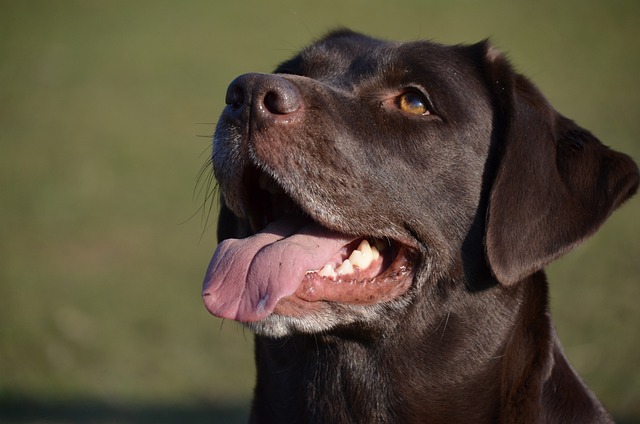
What are 5 common foods to feed dogs if they have an upset stomach
If you’ve ever watched your dog turn away from their food, then spend the next hour pacing and whimpering, you know the panic of an upset stomach.
You know that look your dog gives you on a sweltering summer day? Tongue lolling, panting heavily, seeking out the coolest tile floor – it's a clear sign he's feeling the heat intensely. Unlike us, dogs can't sweat efficiently to regulate their body temperature. They rely primarily on panting and releasing heat through their paw pads, which just isn't as effective, especially for brachycephalic breeds like Bulldogs or Pugs. Heat stress isn't just uncomfortable; it can escalate dangerously fast into heatstroke, a genuine veterinary emergency. Recognizing this vulnerability makes finding safe, effective ways to help them cool down from the inside out absolutely crucial. It's about comfort and potentially preventing a crisis.
Ah, the classic image: a dog happily crunching on ice cubes or lapping up freezing cold water. Many folks believe this is the ultimate way to cool a hot hound. Actually, while hydration is paramount, extremely cold water or large amounts of ice can sometimes cause stomach upset or even cramping in sensitive dogs. Another common misconception is that any human "cooling" food is automatically safe for Fido. Feeding grapes or raisins, for instance, aiming for hydration, would be disastrously toxic. And simply relying on increased water intake, while vital, doesn't directly address lowering core body temperature in the way certain specific foods can. We need smarter, safer strategies grounded in understanding canine physiology.
So, what *can* you safely offer that genuinely helps lower their temperature? Let's talk about nature's coolants. Watermelon is a superstar here – incredibly hydrating (over 90% water!), packed with vitamins A and C, and low in calories. Just be meticulous about removing all seeds and the rind first. Plain, unsweetened yogurt (preferably Greek for higher protein and lower lactose) is another excellent choice. The probiotics are great for gut health, and its cool, creamy texture feels refreshing. Offer small dollops frozen or straight from the fridge. Cucumber slices are basically crunchy water sticks – low-calorie, hydrating, and most dogs love the crisp texture. For a truly icy, engaging treat, blend plain, salt-free bone broth or diluted low-sodium chicken broth with dog-safe fruits like blueberries (rich in antioxidants) or mashed banana, pour into ice cube trays or lick mats, and freeze. These frozen delights provide sustained cooling as your dog works on them, combating dehydration simultaneously. Many veterinarians endorse these options as safe, natural ways to support thermoregulation alongside fresh water.
Introducing these cooling foods requires a gentle approach. Think "treat," not "meal replacement." Start with very small amounts – a couple of small watermelon cubes, a teaspoon of yogurt, a few thin cucumber slices. Observe your dog closely for the next 24 hours. Any signs of digestive upset like vomiting, diarrhea, or unusual lethargy mean you should stop and consult your vet. Portion control is key; even healthy treats add calories. A good rule of thumb is that treats shouldn't exceed 10% of your dog's daily caloric intake. Frequency matters too – these are occasional cooling aids, perhaps offered once or twice on a particularly hot day, not constant snacks. If your dog has any underlying health conditions like diabetes or kidney disease, always check with your veterinarian before introducing new foods, even seemingly benign ones like cucumber or yogurt. What works wonders for one dog might not suit another.
While these foods are fantastic tools, they're most effective as part of a broader heat management plan. Always, always ensure unlimited access to fresh, clean, *cool* (not ice-cold) water. Multiple bowls around the house and yard are helpful. Time walks and play sessions strategically – very early morning or late evening are best when pavement and air temperatures are lowest. Test pavement with your hand; if it's too hot for you, it's scorching for their paws. Create ample shaded, breezy resting spots, both indoors and out. Consider using cooling mats or damp towels for them to lie on. You might even set up a shallow kiddie pool for supervised splashing. Good air circulation indoors, whether through fans or air conditioning, is vital. Remember, panting is their cooling mechanism, so never muzzle them in hot weather. Combining smart feeding with these environmental adjustments creates the safest, most comfortable summer experience for your furry companion. Watching them enjoy a frozen yogurt-blueberry pop while relaxing on their cooling mat in the shade? That's the picture of summer contentment, safely achieved.

If you’ve ever watched your dog turn away from their food, then spend the next hour pacing and whimpering, you know the panic of an upset stomach.

If you’ve ever cleaned up diarrhea or watched your dog vomit after meals, only to feel helpless as they refuse their next bowl of food, you know the stress of a sensitive stomach.

If you’ve ever stared at the ingredient list on your dog’s kibble, wondering what “meat by-products” really are, you’re not alone. New dog owners

If you’ve ever noticed your dog suddenly shaking their head like a wet towel, or pawing at their ear until it’s red and sore, you might’ve wondered if they’re just being “naughty.”

Finding worms in your dog’s stool or noticing them scooting uncomfortably across the floor is enough to make any pet owner’s heart sink.

If you’ve ever dreamed of having a dog but hesitated because your eyes water and nose runs around furry pets, you’re not alone.